Rusty Cat: 1969 Jaguar E-Type FHC
The Jaguar E-Type is a striking looking car that remains a desirable classic today. Good examples can command some pretty extraordinary prices, but this 1969 model is going to require a lot of work if it is to reach that sort of level. It has plenty of rust issues, so it will be interesting to see if we have any Barn Finds readers who would be willing to tackle this restoration project. The Jaguar is located in Newtown, Pennsylvania, and has been listed for sale here on eBay. Bidding currently sits at $12,000, and the reserve has been met.
When it comes to issues that can stop a vehicle in its tracks, the E-Type has two main ones to consider. The first of these is rust, while the second is electrical gremlins. This particular Jag would seem to have plenty of the former. When you scrutinize the photos, it would appear that this is a car that will need to be dismantled entirely if a restoration is to be completed properly. The vehicle has been parked since 1977, with the owner purchasing it approximately 4-years-ago. This Jaguar is a project that stalled before it could start, but at least the car would appear to be complete. The Cream paint is looking pretty sad and sorry, but this paint color does have its advantages in a situation like this. It does make it reasonably easy to spot many of the rust problems. The vast majority of the rust is confined to the lower areas of the Jag. However, there is some significant rust around the rear hatch opening, under the seal. There are also some apparent problems with the doors, rockers, and rear valance. That isn’t the end of it, because there is some significant rust in the floors where they meet the rockers. There is also corrosion in the trunk that has made the steel thin. Given the fact that rust issues are quite prevalent in the E-Type, replacement steel is available to address these issues. However, the reality is that this is a car that will need to be dismantled down to the last nut and bolt if the restoration is going to be complete to a high standard. Adding to the woes is the fact that the bumpers and some of the exterior trim pieces are also showing corrosion problems. I think that the bumpers, in particular, are probably beyond salvation. On the plus side, the glass appears to be in good condition.
The interior of the E-Type is finished in Black leather, and a full restoration is going to be required. It is complete and unmodified, and there are plenty of components that look like they could potentially be saved. The covers on the seats look quite promising, and it would be interesting to see how they would respond to being cleaned and conditioned. The dash pad is cracked, the door trims are showing some visible deterioration, as are some of the plastic pieces. It would take a personal inspection to determine what would need replacing. Still, if this car is eventually going to be returned to a pristine state, then there could be no compromises when it comes to assessing the interior. The 1968 model year saw air conditioning become available as a factory option, and that has been fitted to this car.
Tilting the enormous hood forward on the E-Type reveals the 4,235cc DOHC 6-cylinder engine, which is backed by a 4-speed manual transmission. By the 1969 model year, the performance had begun to suffer as emission regulations began to tighten. The E-type was blessed with 246hp by this point in time. This represented a drop of around 20hp from the 4.2’s peak. It was still a fast car and was easily capable of producing a 15.5-second ¼ mile ET. It could also wind itself out to a top speed of 149mph, which remained very respectable. Mechanically, this E-Type is an unknown quantity. The owner doesn’t indicate whether it is a numbers-matching vehicle, nor does he provide any information on the condition of the engine. I would assume that the engine doesn’t run, but it isn’t clear whether it even turns freely. Once again, the potential is there for plenty of work, but it will require a personal inspection to determine just what will be required.
Values for pristine 1969 Jaguar E-Types have been climbing quite strongly over the past 3-years. Recent events have seen them take a hit, but they are now beginning to bounce back. The Fixed Head Coupe doesn’t generally tend to command the same sorts of values as the Roadster, but they still do very well. It is possible to find some tidy examples for around $65,000, but a pristine vehicle can quite easily push the value into six-figure territory. This E-Type has a long way to go before it would be worth that sort of money. However, the intense bidding to this point would tend to suggest that there are a few people out there who believe that it is possible. Would you take it on?
Auctions Ending Soon
 2002 Subaru Impreza WRXBid Now2 days$333
2002 Subaru Impreza WRXBid Now2 days$333
 1975 Chevrolet Corvette ConvertibleBid Now2 days$4,000
1975 Chevrolet Corvette ConvertibleBid Now2 days$4,000
 1964 Ford F-100 Camper CustomBid Now2 days$2,000
1964 Ford F-100 Camper CustomBid Now2 days$2,000
 2006 Jeep Wrangler SportBid Now4 days$10,500
2006 Jeep Wrangler SportBid Now4 days$10,500
 1974 Datsun 260ZBid Now6 days$750
1974 Datsun 260ZBid Now6 days$750
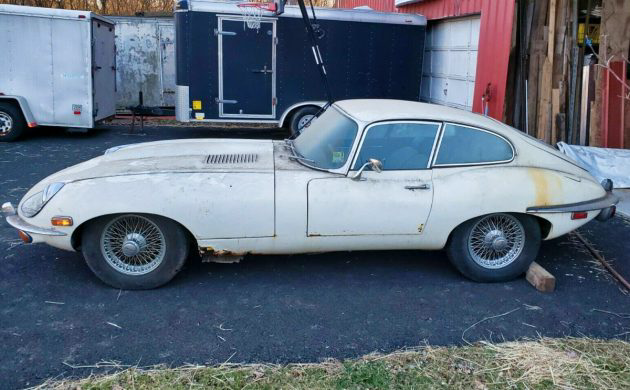
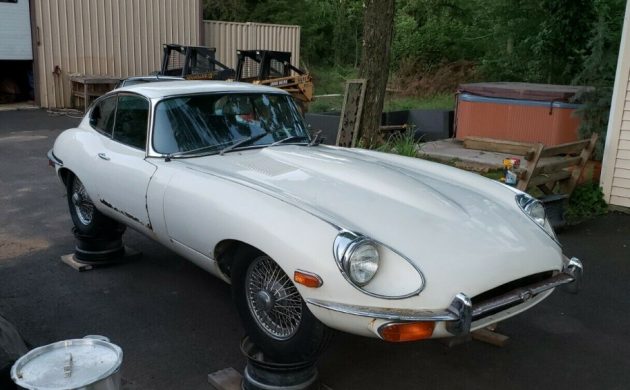
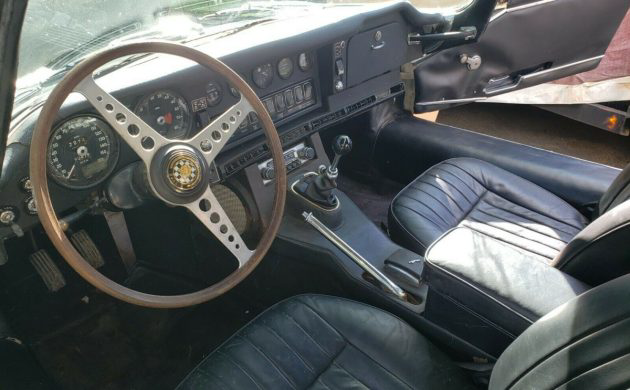
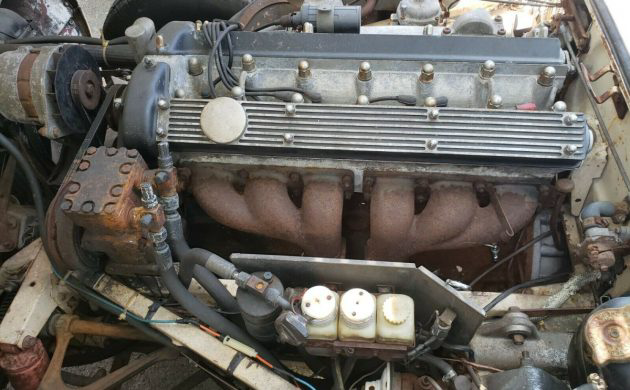
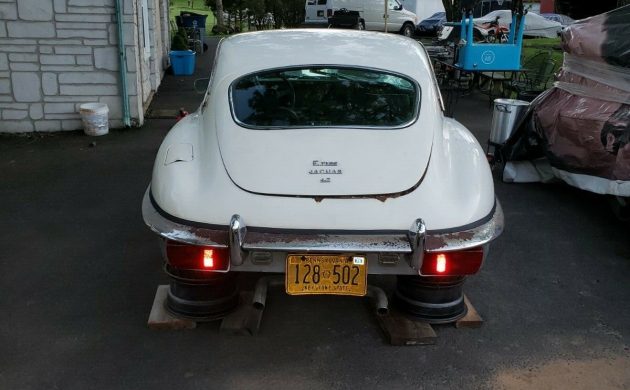

Comments
A world of misery. Sure, could be restored. Take a resto on say, a mustang thats rotted to this degree and multiply the difficulty by 100. 12 grand?? Know what you are getting into. Good luck and stay safe.
Cheers
GPC
gaspumpchas, help me understand what to expect from a cost perspective. This doesn’t look awful. Where do you see the cost piling up?
Hi nate- dont know how much restoration work you have done, but My experience has shown that yep- it doesnt look bad, but once you get it apart, what you dont see will be the most trouble, especially a Jag. My first auto job was at a jag dealer, and these things were trouble when new, especially the electrical system. Wouldnt be surprised to see this cost 75 grand or more, depending what level the owner wants to take it to, as capt RD said. If you were doing this for yourself, you could save alot of coin.If you sent it to a resto shop it would be hourly shop rate, times the hours spent, plus parts and materials. Hope this sheds a little light on your question. Good luck and stay safe!
Cheers
GPC
Nate, it’s what you “Don’t” see that zooms up the restoration costs….assuming you’d want to restore it to original. Just sayin…..
I briefly had possession of a ’67 XKE while in Hawaii in 78. Even though it was barely over 10 years old, the sun in Hawaii had turned the cream color paint into oxidized dust for the most part. The leather interior was in shreds (this one looks perfect compared to the one I had) and rust was seriously bad on the lower doors, and in many other places. We did manage to sell it, though – $700. On the upside, it ran really well – no problems in the engine or drivetrain. Ugly fun.
Being a complete car – despite the extensive rust – this will be restored to some level, a great driving classic rolling piece of art. So many of these in considerably worse condition are restored every year, at a price of course, but it doesn’t have to be a concourse example to drive and enjoy, and enjoy you will when you finally hit that starter button.
This is not a coupe but a 2+2 with the rear seat folded down, Being a Series 2 2+2, it is an “entry level” E-Type. An E-Type owner would pass it up, unless he saw a cache of needed parts there.
I don’t believe this to be a 2+2. Take a look at the doors compared to a 2+2. In addition the roof line slopes differently between the FHC and the 2+2. As said it will take a bit of work (and a lot of money) to get this one right again whether you do your own work or not. Still great cars (get rid of those Stromberg carbs).
Chris,
You are correct, this is a 2 person vehicle. Not only is the 2+2’s roof line higher in the back seat area, but the wheelbase is longer.
The first serial number for the FHC LHD in 1969 was 1R25601. As a comparison the SN for the First 2+2 was 1R40799. **
The serial number for this car was 1R25610
** Reference -Factory original Jaguar E-type ( Jaguar Heritage book)
You’ll spend 130k to have a 80k car
130K to have an 80K car? You’d be better off turning this Jaguar into a restomod.
I restored a 70 that was in better shape then this one. Look to spend a lot of money if restored correctly. You’ll have way more money in itvthen market value after you finish.
Why are E-Jags SO much more expensive than comparable Mustangs.. Are they superior in both performance and art?
Andrew, I see your point in comparing the domestic car to the foreign car. But comparing the Mustang to the XKE is like comparing Joan Rivers to Sofia Vergara.
To much for me to undertake, would be better if I started one with less work,
but still looking for the reasonable priced one.
The real problem with most restorations are all the parts that look OK when first viewed don’t look good enough to refit after the body is repaired and resprayed, a car like this is best restored to daily driver rather than 100%.
I personally prefer the 2+2. I like the extra length and I like the roof line. Weird, eh?
What’s not to like?
The engine and electrics are not big problems with Jags, provided you understand them, with this car RUST and bright work are the main problems and a restomod will not be a great cost saver there, doing it as a daily driver for future improvement would be a big cost saver,
I don’t know if hey allow links here but I would buy a brand new shell from somebody like this guy, Martin Robey, https://www.martinrobey.com/jaguar/body-shells and then rebuild the engine and do a full transplant to a new shell. You would have an excellent car. That current body-shell is a money pit.
SOLD for $16,300.
I would be more interested in the hot tub in the picture.
I own a ’69 OTS (Open Two Seater). My advice is: buy the best E Type you can afford, as it will be cheaper in the long run. These are very rewarding sports cars to own, but don’t treat them or consider them utilitarian. If you know how to do most of the work yourself and are familiar with parts prices and suppliers, then go ahead and buy a “basket case” if you know what you are doing. Otherwise buy a decent one at a realistic price, and have a classic Jaguar shop with competent and reasonable mechanics service it. These cars are wonderful to own but need to be serviced per the owner’s manual. Just putting in gasoline and expecting them to run ad infinitum is a recipe for trouble.